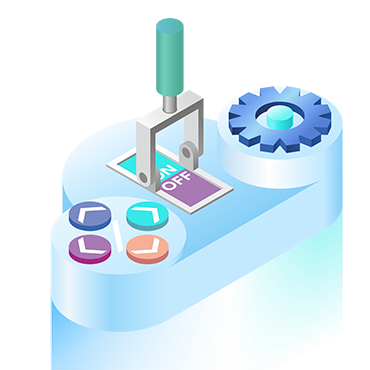Top 12 DevOps Kubernetes Tools AND Practices
Updated 4 Nov 2022
Teams of software engineers are always looking for ways to enhance and hasten the cloud native DevOps with Kubernetes software development process. One well-liked tactic is DevOps, an engineering technique that integrates development and operations.
Traditional engineering firms usually segregate development and operations teams, which breeds tension between these two crucial divisions. Operations engineers are needed to prevent mistakes and the deployment of buggy software, while developers are under pressure to write and release more code. Operations teams typically act as gatekeepers as a result, which slows down the deployment process.
A DevOps K8s approach addresses this issue by developing cooperation and boosting collaboration between the development and operations/quality assurance teams. Since the same group of people is in charge of every stage of the software development life cycle in DevOps, there is no need for a gatekeeper.
A DevOps strategy has many benefits, but putting one into practice is not simple. This manual outlines recommended DevOps procedures to enhance your workflow.
What is DevOps, and how is it related to Kubernetes?
Development and operations teams, who up until now have worked separately in silos, are now connected through DevOps. DevOps provides a common infrastructure and toolchain structured around the idea of pipelines, integrating the workflows and procedures of development and operations. Each team gains knowledge of the procedures utilized by the other teams through collaboration, enabling them to cooperate to increase effectiveness and quality.
Development teams constructed their pipelines using a variety of tools, which they then had to tweak and integrate when firms adopted DevOps. The pipeline needed to be rebuilt whenever a new tool or need was added. The answer to this inefficiency was to containerize pipeline components and control them with Kubernetes.
The code and dependencies required to operate an application or service in any software environment are packaged together as a single piece of software called a container. Organizations may build adaptable, portable pipelines that require little effort to set up and copy by building a modular architecture based on microservices operating in containers. Many elements of a container’s lifecycle are automated by a container orchestrator like Kubernetes, which helps manage numerous containers as part of a cluster.
Why is DevOps Important?
A concept called DevOps enables companies to produce better goods and services more quickly. It is built on the premise that software developers and IT operations specialists should collaborate to ensure their applications consistently function as they should. It is a continuous process of developing, testing, and releasing software.
Companies that use DevOps services have more effective software delivery methods, which allows them to release their products more quickly and with fewer errors. DevOps do their own thing most of the time, but what they do it tremendously helpful. Because of their increased efficiency, businesses are also better able to modify their goods to fit the wants and expectations of their customers or act rapidly when a rival introduces a new product.
Despite the fact that it enhances communication across many divisions in a company, DevOps is more than just getting things done quickly. It enables developers to build code that is more compatible with production settings by assisting them in understanding what occurs in those contexts. Additionally, it guarantees that IT operations personnel are aware of the support requirements for developers.
DevOps Best Practices
1. Build with the proper tools
In order to increase software quality and delivery speed, a DevOps toolchain needs the appropriate tools for each stage of the DevOps lifecycle. Review features for each stage of the DevOps lifecycle and learns more about how to select the top DevOps tools.
2. Implement automation
Developers are able to routinely merge work into the main repository thanks to continuous integration and delivery. CI/CD automates this process, from batching in a designated time to frequent commits, in place of manually reviewing code. Automated testing, in addition to CI/CD, is crucial for effective DevOps procedures. End-to-end testing, unit testing, integration testing, and performance testing are examples of automated tests. Read more to learn how to automate the software development process. Study up on automation.
3. Application and DevOps pipeline monitoring
Monitoring the DevOps pipeline is crucial to preventing unneeded delays brought on by a botched build or failed test. Although automation greatly accelerates the pace of development, it is still preferable to carry out tasks by hand if an automated process fails and no one notices. In a similar vein, it’s crucial to keep an eye on your production apps to spot errors or poor performance before your clients do.
4. Collect constant feedback
Team members are guaranteed to have all the knowledge necessary to complete their tasks on schedule through continuous feedback. From a development standpoint, this means that the team will be promptly informed of any pipeline issues. Additionally, it implies that the developers be given access to the clear, comprehensive findings of code testing as soon as feasible. From the standpoint of product management, the team is informed of any production hiccups, performance issues, or reported faults. The notion that a development team could either optimize for speed or quality was common in the past. One of the components of DevOps that allows for both is continuous feedback.
5. Focus on client satisfaction
Whether you choose a comprehensive DevOps strategy or the conventional waterfall methodology, the objective is to satisfy your customers.
One of the main demands of contemporary SaaS consumers, for instance, is the quick release of new capabilities. DevOps offers the ability to simplify the release procedure. Since the same people are handling code releases and writing new code, it is simpler to deliver new features to clients more quickly.
6. CI/CD – Continuous Integration/Continuous Delivery
For merging code changes from numerous contributors into a single repository, the DevOps best practice of Continuous Integration (CI) is used. CI enables developers to automatically test the validity of their code and incorporate code updates regularly.
It is possible to achieve continuous integration by using a source code version control system. Continuous integration seeks to improve overall code quality, accelerate deployment, and find and correct issues early in the development cycle.
The frequency will inevitably rise as teams improve the entire process by cooperating. Early bug detection aids teams in avoiding bigger issues when the code is deployed into production. Over time, this lowers technical debt.
7. Observe the Correct Metrics
Monitoring performance continuously is a DevOps best practice. The efficiency of a DevOps method can only be assessed by monitoring the pertinent performance measures, such as lead time, mean time to detect, and issue severity.
Monitoring these data is very important since it enables you to identify problems early and respond quickly. Your company’s objectives and expectations will define which DevOps metrics you measure. Any engineering team should consider some indicators since they are related to profitability, such as unit cost.
It is a great idea to monitor unit cost as a DevOps measure since it helps to create software that is affordable from the start. This is because you’ve already begun predicting your expenses, allowing you to plan
The 5 best tools used by DevOps engineers
-
Draft
Draft is a program used to create cloud-based apps using Kubernetes. The tool for construction and deployment was made by Microsoft. You may use Draft to produce Docker images once your code has undergone continuous integration. Additionally, it may be used to create Helm charts, which result in the YAML files needed for the deployment of Kubernetes applications.
This tool’s advantage is that you can use Helm in combination with it to deploy and bundle apps. Its disadvantage is that it requires a lot of setups.
-
Jenkins
Jenkins X is one of the most popular and effective CI systems used for Kubernetes deployment. It is a complimentary automation solution with built-in continuous integration plugins. It was created using Java.
You can use Jenkins to continuously create and test your software projects, making it easier for you to make changes to the project. You may use this tool to continuously deliver your project by using a number of testing and deployment techniques. Jenkins, although being a strong tool, may be challenging and error-prone.
-
CircleCI
CircleCI, a CI/CD solution, encourages rapid software development and publishing. Using CircleCI, the entire user workflow—from code creation and testing to deployment—can be automated.
CircleCI can be linked with GitHub, GitHub Enterprise, and Bitbucket to trigger builds when new code lines are committed. In addition, CircleCI provides cloud-managed continuous integration hosting or makes use of local infrastructure that is firewall-protected.
-
Weave Cloud
This always features highly on the best DevOps tools list. You can easily manage and keep an eye on your Docker containers using the CD tool Weave Cloud. It also provides a straightforward procedure for setting up your Kubernetes cluster and CI/CD process. It makes it possible for the apps you want to deploy to roll out, update, and roll back more quickly. For this tool’s declarative infrastructure and applications, Git is the only reliable source of information. The disadvantage is that it needs a lot of fine-tuning to work properly.
-
Travis CI
Travis CI is a CI service that is used to develop and test projects. Travis CI automatically discovers new contributions and publishes them to a GitHub repository. Additionally, with each new code change, Travis CI will build the project and run tests. The tool supports many build options and languages, including Node, PHP, Python, Java, and Perl.
Conclusion
The need for Kubernetes engineers will increase as the need for cloud systems, DevOps, and virtual machines grow. Your cloud-based apps will run well in any situation if you hire competent and experienced Kubernetes engineers.
These DevOps practices and tools give businesses the increased speed they need to properly service their clients and reach their goals. Additionally, it increases performance overall, decreases problems, and enhances the quality of software products. Speed, security, dependability, CI/CD, scalability, and increased teamwork are the major advantages of DevOps.



